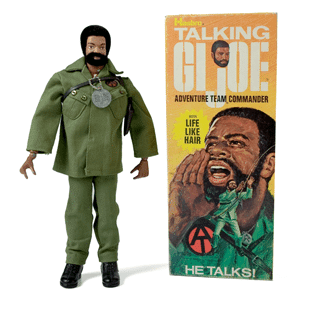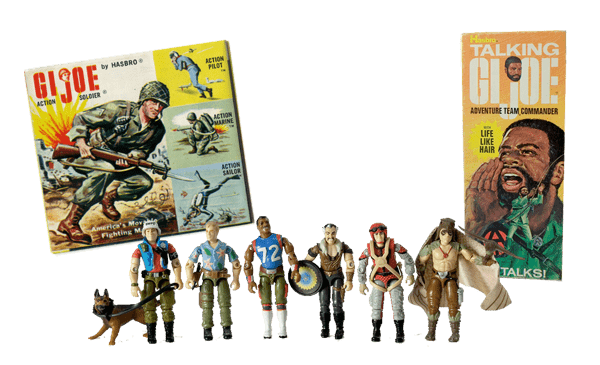
Inducted Year: 2004
In 1964, amid the Cold War, Hasbro introduced a new type of toy into the world of play. Named G.I. Joe after ordinary soldiers of World War II, the 11 1/2-inch male figure wore uniforms representing the U.S. military and had 21 moving parts. Hasbro branded it an “action figure” to distinguish it from dolls and created a variety of vehicles, equipment, and play sets to accompany it.
Joe established his success in the first year as millions of boys found him a compelling toy for imaginative play. The action figure’s popularity rose steadily until American involvement in Vietnam made war-related toys less appealing. Hasbro responded with a new Joe. The soldier of 1964 became a Land Adventurer in 1970 and took on more peaceful action, recovering lost mummies and rescuing the environment. Within a few years, Joe’s popularity declined. In the mid-1970s, he became an 8-inch “super” figure, and in 1978, Hasbro retired him from production for a time.
In the early 1980s, Joe returned, but reduced again to 3 3/4 inches. This time, a Saturday morning TV show and a long-running comic book series fueled G.I. Joe’s revival. In the early 1990s, Hasbro restored Joe to his original size and offered collectible Joes for adults. By late 2004, Hasbro had sold more than 400 million G.I. Joe figures in the 40 years since the toy’s debut.
Because of his popularity, G.I. Joe has been both a battle-scarred soldier of America’s culture wars and an influential toy prototype. For some critics, Joe’s message of “might makes right” is the wrong one to share with children. Other adults counter that Joe encourages kids’ stories of good triumphing over evil and fosters creativity, imagination, and self-esteem. But while grown-ups argue over Joe’s merits and flaws, kids play on, and hundreds of other “action figures” people the toy landscape.

Factoyd: From 1964 to 1968, all G.I. Joe action figures came with a G.I. Joe Army Field Manual to show young owners other available figures and uniforms




